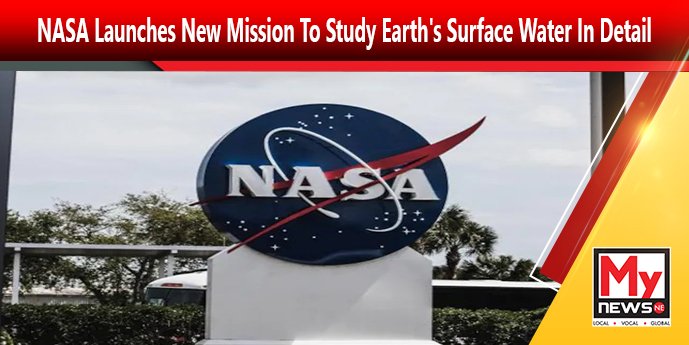NASA Launches 1st ever mission SWOT to Observe Earth’s Water
Guwahati: The first-ever global satellite mission has been launched by NASA, and it will monitor almost all of the planet’s surface water while monitoring the depth of its lakes, rivers, reservoirs, and oceans.
A SpaceX Falcon 9 rocket carrying the Surface Water and Ocean Topography (SWOT) spacecraft lifted out from Vandenberg Space Force Base in California on Friday. According to NASA Administrator Bill Nelson, as quoted by IANS, “Warming seas, intense weather, and more severe wildfires” are just a few of the effects of climate change that humanity is currently experiencing.
“The climate crisis requires an all-hands-on-deck approach, and SWOT is the realisation of a long-standing international partnership that will ultimately better equip communities so that they can face these challenges,” Nelson added. The satellite was built by NASA and the French space agency Centre National d’Atudes Spatiales (CNES). The SWOT spacecraft also has contributions from the Canadian Space Agency (CSA) and the UK Space Agency.
The satellite will measure the height of water in freshwater bodies of water and the ocean on more than 90% of the surface of the Earth. According to the US space agency, this knowledge will shed light on how the ocean affects climate change, how a warmer planet affects lakes, rivers, and reservoirs, and how communities may better prepare for disasters like floods. According to the study, SWOT will send back around one terabyte of raw data every day and will at least once every 21 days cover the whole Earth’s surface between 78 degrees south and 78 degrees north latitude.
“We’re eager to see SWOT in action, ” said Karen St. Germain, NASA Earth Science Division director. aceThis satellite embodies how we are improving life on Earth through science and technological innovations”.
Researchers, decision-makers, and managers of resources would all benefit from using SWOT analysis to better assess and plan for various situations, such as droughts and floods. Researchers can enhance river flood estimates and track the effects of drought on lakes and reservoirs by providing information on where the water is, where it comes from, and where it is going.

